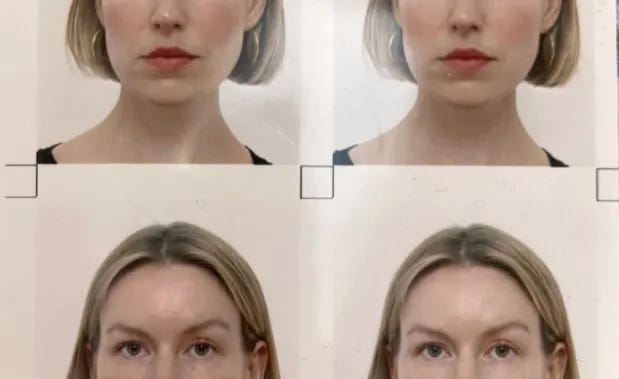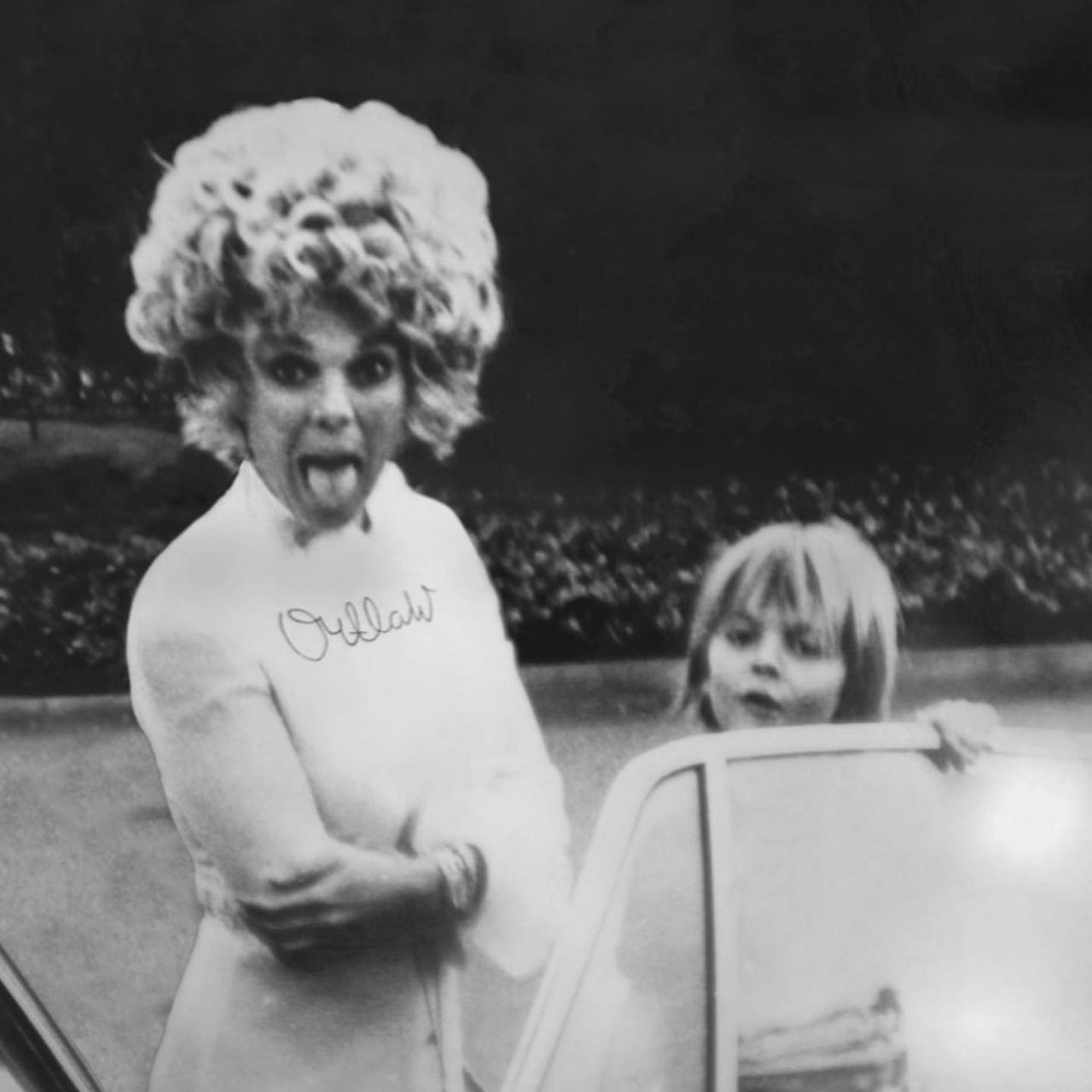“Is to categorise happiness, to compare it, to scare it away?”
In this edition of the Weekender: poetry merch, Wikipedia holes, and a contemplation of time

This week, we’re watching the clock, inventing history, falling into Wikipedia holes, and considering poetic bumper stickers.
ESSAY
The passage of time
After Sophie Mackintosh loses her phone, the poignancy of time becomes more apparent even as its reality becomes more elusive.
Losing time
—
inTime is going quickly. London is beautiful this year, one of the more beautiful springs I can remember. It makes me think about how every summer will take me further away from a specific version of myself, one I can’t seem to stop clinging onto.
But so we go. I drink lemon thyme and rhubarb soda in the sun and make affogato in the afternoon. In the early morning I scope out elderflower on the marshes, feeling photosynthesised. It’s time to renew my passport, so I pick a face for the next decade, official until I turn 46.
There was such an abundance of time at 26. I experienced my happiness freely and unselfconsciously. Now when I feel happy I think, with trepidation and excitement, oh my god, am I feeling happy? Actually feeling happy? And then I think am I as happy as when XX? And like this, attempting to quantify, it slips from my grasp. Is to categorise happiness, to compare it, to scare it away?
It seems churlish to quibble over happiness’s contours, its levels and intensity. I’m safe and loved and only sometimes at the mercy of the void’s gaping maw. When I am happy, lately, it feels smooth. It comes from the feel of the sun on my skin, from the happiness of work, a sighting of ducklings on the Lea, a conversation with a friend. It’s not drenched in electric, it doesn’t make my skin thrill or my step quicken, but it’s more sustainable.
The sunlight inspires vivid memories of sitting on the pavement in Hackney Wick, about to go dancing, the early evening light golden. We used to pre-drink at my house and walk through a nearby park which had mini trampolines, and we would jump on them with our cans in our hands. The night stretched out ahead of us. The night! And that was happiness simple and unassailable. One of the multiple times I lost my phone was on one of those evenings, but I shrugged it off and walked to Victoria Park to watch the sunrise, fell asleep in a child’s play area, and woke up to a concerned father and small boy peering at me. I used to do things like that.
ANIMATION
SHOPPING
The commodification of poetry
A longtime fan of Mary Oliver’s poetry grapples with conflicted emotions after seeing merch that feels “engineered in a lab for someone like me.”
Mary Oliver has a store now
—
inToday a friend sent me a link to Mary Oliver’s store. “OMG” I wrote back. Then I started scrolling. “Oh my god,” I thought to myself this time, not in a good way.
Let me begin with a caveat: there’s a version of me who would buy everything in this store. I am their target demographic in a way that makes me feel almost personally attacked. There is a baseball hat that says simply “wild and precious,” a tote bag with “joy is not meant to be a crumb” in a beautiful scripted font, a cropped sweatshirt with a tasteful silhouette of flying geese on the front and the famous quote from the poem on the back: “you only have to let the soft animal of your body love what it loves.”
I’m a big fan of her work and the way she viewed the world. As I’ve written about previously, I have a bumper sticker with a “Wild Geese” quote on it. So why would the fact that there is more merchandise, engineered in a lab for someone like me, bother me?
[...]
Mary Oliver is one of the best-selling poets of all time—whatever that means. She and her estate likely haven’t made evil-billionaire money by selling poetry collections, but surely that means something. I doubt her close friends have nefarious motives for selling a tote bag that says “If you suddenly and unexpectedly feel joy, don’t hesitate.” But if this store isn’t a cash grab, then that means it’s something else.
Mary Oliver died without becoming a brand and yet became one anyway, and maybe that’s inevitable. Maybe we don’t know how to love anything anymore without turning it into something commercial. Maybe we don’t know how to admire a person without turning them into a one-dimensional persona either: a collection of quotations devoid of context, a bumper sticker, an inspiration.
Just look at Joan Didion or Sylvia Plath or Eve Babitz. Just look at all the merch for Yellowstone and sriracha and bacon. Everything we love gets commodified. The brands might start it, but we’re the ones who keep buying into devotion we can only show by opening our wallets.
ILLUSTRATION

DEEP DIVE
Everything is philosophy
In the introduction to a post about living a more intellectually interesting life, Utsav Mamoria shares a fun fact from the results of a study on Wikipedia.
How to live an intellectually rich life
—
inGo to the main page of Wikipedia.
Click any link that leads to a Wikipedia entry. For that page, click the first hyperlinked word in the main text. Keep doing it—your journey will look something like this [above].
Now try this for several pages. Make them as varied as Nuclear Gandhi, Cow Tipping, and Exploding Trousers.
All of them will lead you to the Wikipedia entry on Philosophy.
In 2017, three mathematicians from the University of Vermont published a paper titled Connecting Every Bit of Knowledge: The Structure of Wikipedia’s First Link Network. They tested this hypothesis over a dataset of 4.7 million English Wikipedia articles and found that Philosophy was the page where the highest no. of articles ended.
95% of all Wikipedia articles led to philosophy.
CARTOON

HISTORICAL FANTASY
Two significant things have happened in Glenfinnan, Lochaber. In 1745, Charles Stuart landed here, raised the royal standard in the name of his father, the self-styled King James III, gathered an army of the local clans, and marched south. In the same spot, more than 250 years later, they filmed the Harry Potter films. In another few hundred years, I think it’s inevitable that the two events will lose their distinction. We will remember how Bonnie Prince Harry led the highland men to a terrible defeat in an attempt to return Dumbledore to his throne, one last ignominious stand for witchcraft, wizardry, and the divine right of kings, before Voldemort and his industrious black-clad Whigs disenchanted the world.
—, posted in a Note
PHOTOGRAPHY

BOOK PARTY
What we’re watching this week
Monday, May 19, at 9 p.m. ET
will be going live with to discuss fashion and gender expression.Tuesday, May 20, at 12 p.m. and 4 p.m. ET
will be going live twice on Tuesday: at 12 p.m. he’ll chat with New Yorker cartoonist , and at 4 p.m. he’ll go live with of .Substackers featured in this edition
Art & Photography:
, , ,Video & Audio:
,Writing:
, , ,Recently launched
Inspired by the writers featured in the Weekender? Creating your own Substack is just a few clicks away:
The Weekender is a weekly roundup of writing, ideas, art, audio, and video from the world of Substack. Posts are recommended by staff and readers, and curated and edited by Alex Posey out of Substack’s headquarters in San Francisco.
Got a Substack post to recommend? Tell us about it in the comments.


























Love it! Thank you! I’m 68, I get it, too. Take me back to the carefree days when I looked so perfect and felt amazing.
I lost my phone (on purpose) years ago...and never looked back:
https://romanshapoval.substack.com/p/phonefree